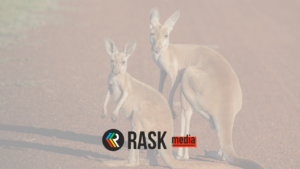It was a busy Tuesday morning for Afterpay Ltd (ASX: APT) shareholders and the company.
Shares in the uber-popular buy now, pay later provider entered a trading halt as the company announced a fourth-quarter trading update, an $800 million capital raising, and co-founder sell downs. Rask Media’s Jaz Harrison covered the APT trading update yesterday.
With Afterpay shares set to resume trading today, let’s dig into the company’s reasons for undertaking this capital raising, along with some key takeaways from the update.
Why is Afterpay raising capital?
Afterpay has launched an $800 million capital raising, which consists of a $650 million fully underwritten institutional placement and a $150 million non-underwritten share purchase plan (SPP). This video from Rask Education explains what that means:
The pricing of the placement will be determined through an institutional bookbuild, with an underwritten floor price of $61.75 per share. This represents a 9.2% discount to Afterpay’s last closing price of $68.
Despite the discount, it’s important to keep in mind that Afterpay shares have been on a tear recently – charging past pre-COVID-19 levels and then some. In fact, the first time the Afterpay share price closed above the $60 mark was on Tuesday last week. So in this sense, the company is certainly making hay while the sun shines — cashing in on its high share price.
Of course, Afterpay provided some colour on why it is raising additional capital, highlighting four primary purposes:
- Invest in existing regions to maintain and grow market share, and expand customer offerings
- Expedite expansion into new markets
- Fortify its balance sheet to fund underlying sales growth
- Create flexibility and capacity to execute on potential merger and acquisition opportunities in the short to medium term
Key takeaways from Afterpay’s announcement
As it’s done in the past, Afterpay announced the co-founder sell down (more on this in a minute) alongside a strong trading update.
There’s a lot to unpack here, so let’s run through some of the key points…
Metrics
Afterpay noted that its Q4 sales performance represented the strongest quarterly performance to date. The company attributed this growth to the accelerating shift to e-commerce spending since the impacts of COVID-19 emerged globally.
Here’s how some of the company’s key metrics shake out:
| Q4 FY20 | QoQ growth | FY20 | YoY growth | |
| Underlying sales | $3.8 billion | ~46% | $11.1 billion | 112% |
| ANZ | $2 billion | ~33% | $6.6 billion | 52% |
| US | $1.6 billion | ~60% | $4 billion | 330% |
| UK | $0.2 billion | ~50% | $0.6 billion | N/A |
For context, Afterpay launched in the UK market in May 2019.
| At 30 June 2020 | At 30 June 2019 | Growth | |
| Active customers | 9.9 million | 4.6 million | 116% |
| ANZ | 3.3 million | 2.8 million | 18% |
| US | 5.6 million | 1.8 million | 219% |
| UK | 1 million | 0.0 million | N/A |
| Active merchants | 55,400 | 32,300 | 72% |
| ANZ | 42,800 | 28,400 | 51% |
| US | 11,500 | 3,800 | 202% |
| UK | 1,100 | 0 | N/A |
Other notable headline figures include:
- FY20 EBITDA between $20 million and $25 million – compared to $28.7 million in FY19
- An average of 20,500 customers added per day in Q4 FY20 – compared to 15,100 in Q3 FY20
- Average order value of $153 for FY20 – compared to $150 in FY19
- FY20 net transaction margin (NTM) of approximately 2% (consistent with its FY22 target) – compared to 2.3% in FY19
- FY20 net transaction loss (NTL) of approximately 0.55% – compared to 0.42% in FY19
The latter metrics, NTM and NTL, are extremely important considerations when it comes to Afterpay’s valuation and long-term success.
Afterpay calculates NTL by subtracting total late fees from the gross loss (bad debts plus collection costs) for the period. Meanwhile, NTM is the net margin after losses and variable transaction costs have been taken into account. Both metrics are expressed as a percentage of underlying sales.
Put simply, NTL represents Afterpay’s credit risk (i.e. customers failing to repay their outstanding balance), while NTM is effectively an operating profit margin.
Global expansion plans
Afterpay revealed its Canadian expansion has continued to progress, with launch expected in the first quarter of FY21. The company named Canada as its next target market back in February this year and aside from the launch timeline, is yet to provide details.
Additionally, Afterpay noted it has identified opportunities to accelerate its expansion into additional markets, saying, “this has the potential to see us launch into new markets in late 2020 or early 2021”.
What’s more, the company revealed it is exploring a number of “small” acquisition opportunities to accelerate the roll out across potential new international markets. “Due diligence is being undertaken, however, there is no certainty that any deal will be completed,” the company stated.
Co-founder sell down
Detailed at the pointy end of its announcement was news of the co-founder sell down. Anthony Eisen (chief executive and managing director) and Nick Molnar (global chief revenue officer) will sell 2.05 million shares each, representing 10% of their respective holdings in the company.
This sell down is fully underwritten and pricing will be determined under the bookbuild for the institutional placement. Using the floor price, the sale will net the pair a cool $125 million each.
Now, while insider selling is often seen as a bearish signal, this certainly isn’t always the case. Quality of management, tenure, and remaining shareholding are all things to keep in mind when trying to digest this type of news. In Afterpay’s case, Eisen and Molnar have led the company to tremendous success to date, are founders, and will hold around 18.4 million shares each after the sale. So, it’s fair to say the pair remain well-aligned.
This isn’t the first time Eisen and Molnar have sold down their respective stakes. Starting off with 25 million shares each, they both sold 2.5 million shares at a price of $6.94 per share on 22 May 2018 (when shares were released from escrow on 8 May 2018). At the time, the co-founders agreed not to sell any further shares over the next 12 months.
Fast forward to 11 June 2019 and Afterpay announced a secondary sell-down, in which Eisen and Molnar offloaded 2.05 million shares each to two US-based private equity outfits at a price of $23 per share. Again, the pair confirmed they did not intend to sell any further shares during FY20 (yesterday’s announcement came 5 trading days into the new financial year).
This is all to say that the co-founders certainly have a history of selling down, and doing so soon after these voluntary trading restrictions have been lifted. Considering Eisen and Molnar have an enormous amount of personal wealth tied up in the one asset (Afterpay), it makes sense that they’d want to diversify. And if you’d sold your shares alongside the founders over the last couple of years (at prices of $6.94 and $23), you would’ve left a sizeable amount of money on the table. So I would think twice before selling Afterpay shares for this reason alone.
What do brokers think about Afterpay shares?
Last Thursday, the Afterpay share price jumped 9.5% when investment firm Citi – which just so happens to be one of two institutions overseeing Afterpay’s capital raising – more than doubled its price target on Afterpay shares from $27.10 to $64.25. Think about that for a moment, and consider the incentives of the parties (Citi and Afterpay).
This came after the broker upgraded its earnings estimates based on strong growth (and potential) in overseas markets and the acceleration of the shift to online shopping.
More recently, analysts at UBS retained their sell rating on Afterpay shares yesterday. Holding its price target steady at $25 per share, UBS believes this equity raising demonstrates the underappreciated capital intensity of Afterpay’s business model. Nonetheless, the broker noted the raising “makes sense”.
What’s next for the Afterpay share price?
The rollercoaster Afterpay share price has shown that anything is possible. Remember, this is a company that got to as low as $8.01 in the March bear market and then shot up more than 700% in the space of three to four months.
Afterpay is set to announce the completion of its institutional placement this morning. This will allow Afterpay shares to resume trading when the market opens today.
According to reporting in the Australian Financial Review (AFR), brokers Citi and Goldman Sachs who are overseeing the raising said that the deal was “covered through the range”, including at the top which was set at $66. Further reporting in the AFR revealed Chinese conglomerate Tencent submitted a bid at $66 and was all but guaranteed to get at least 5% of the placement ($32.5 million worth of shares).
Looking at the depth in CommSec, there are a fair few more buyers than sellers for Afterpay shares (in terms of both bids and units). The depth suggests that the Afterpay share price might open higher this morning, but a lot can happen between now and market open. Plus, sentiment can turn on a dime and it will take time for investors to digest this news and re-evaluate shares accordingly.
[ls_content_block id=”14947″ para=”paragraphs”]
Disclosure: At the time of writing, Cathryn own shares of Afterpay.




